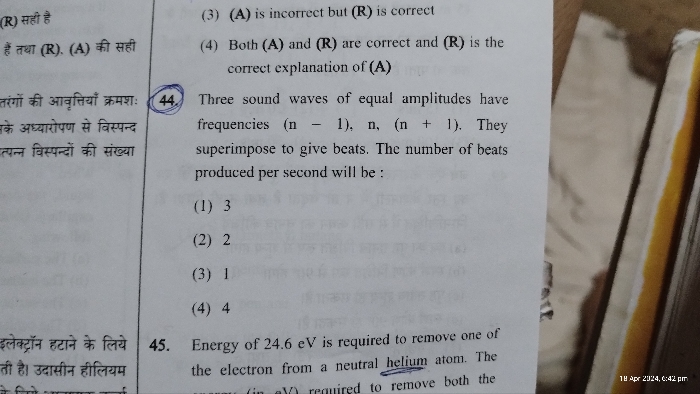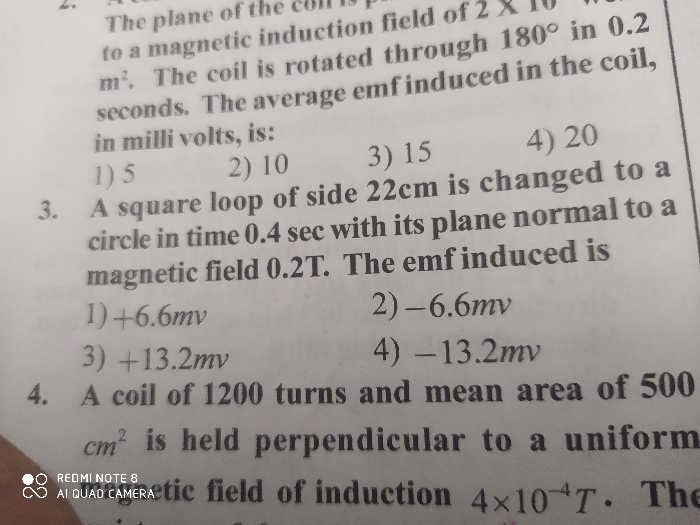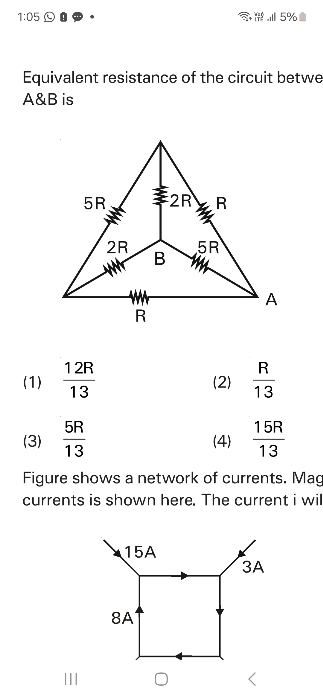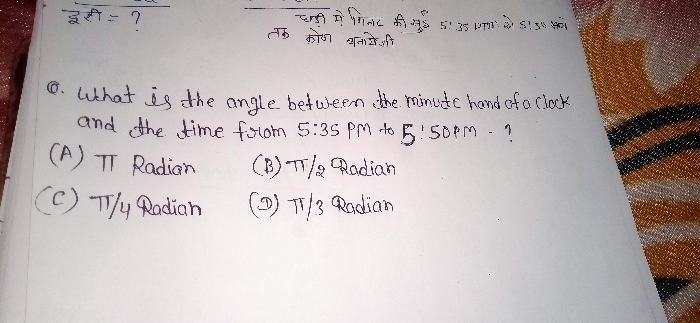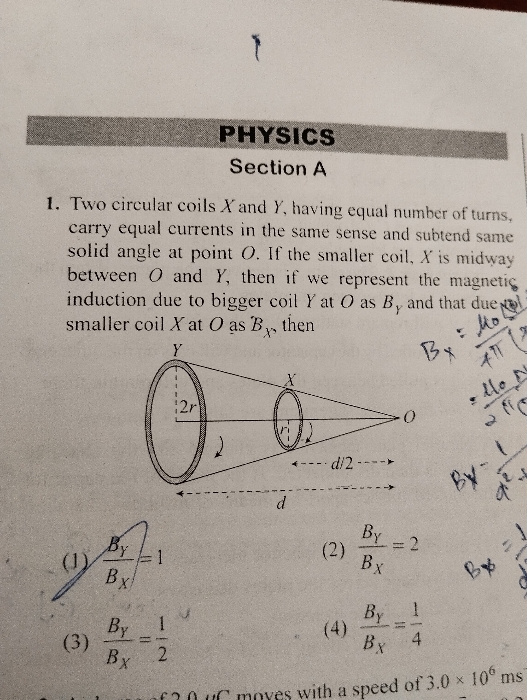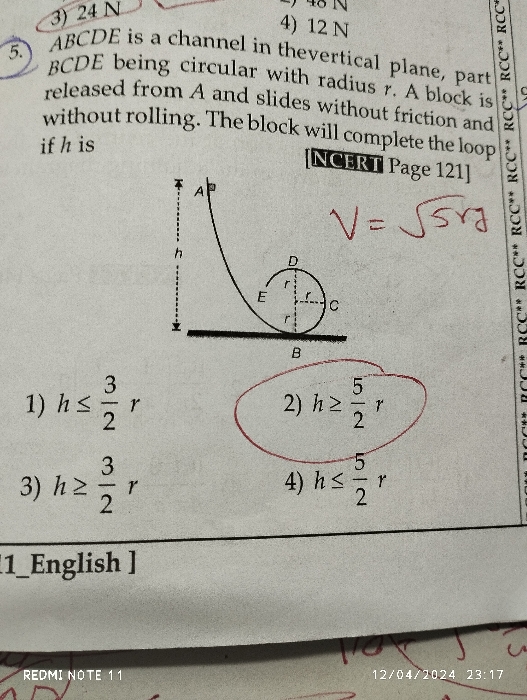NEET Class neet Answered
please answer this
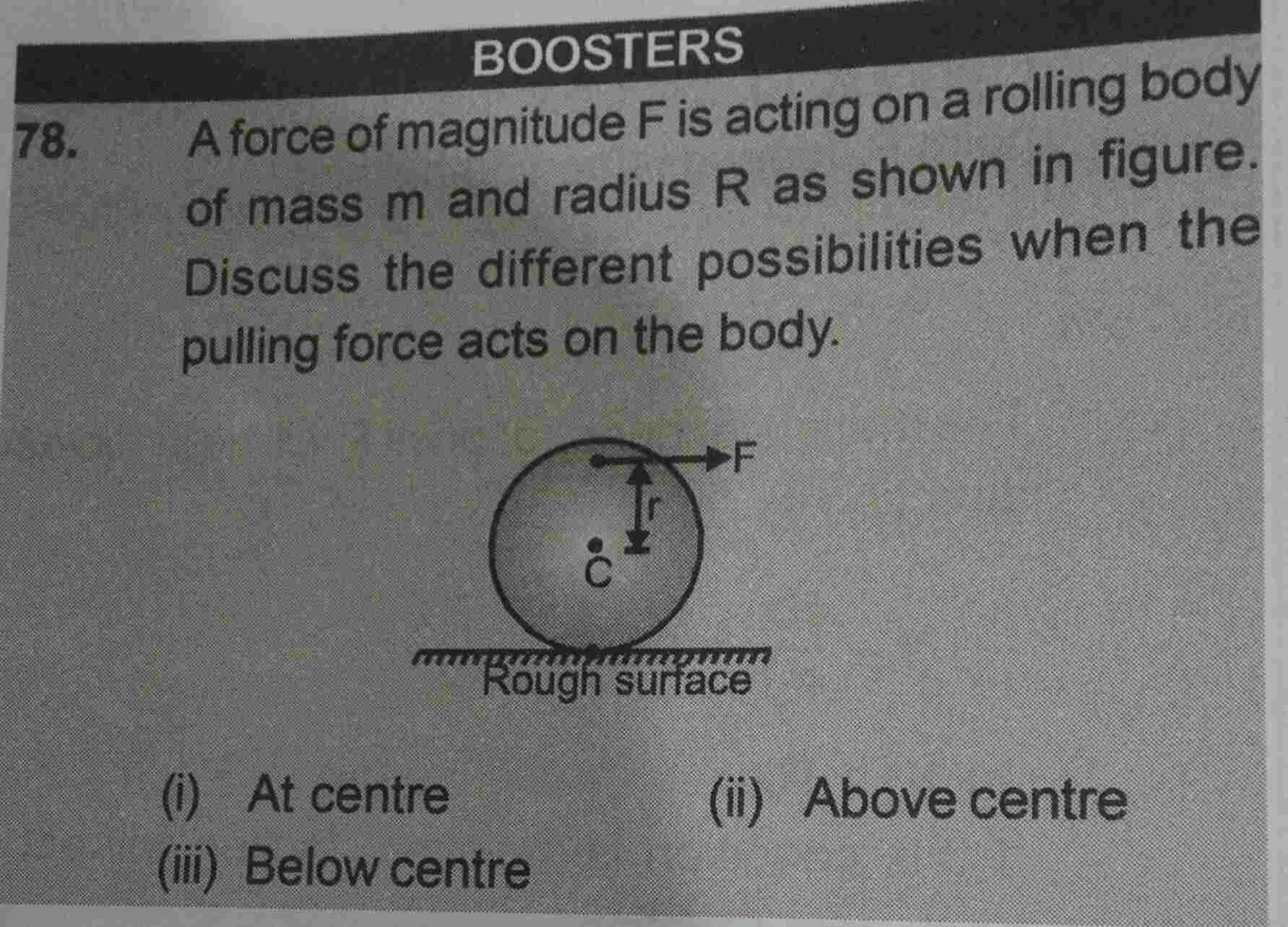
Asked by Prashant DIGHE | 18 Apr, 2020, 09:37: PM
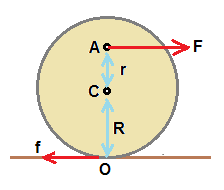
Let r be the distance from centre of mass to point A , which is point of application of force F .
Friction force f is acting at the point of contact.
Acceleration of centre of mass , aC = ( F - f ) / M .....................(1)
where M is mass of rolling object
Angular acceleration is due to torque of applied force F and friction force f.
By taking point of contact as reference point, F(r+R) = I α = ( IC + MR2 ) α .........................(2)
where I is moment of inertia about point of contact O and it is given by, I = IC + MR2
where IC is moment of inertia about centre of mass.
Angular acceleration α = ( aC / R ) ..............................(3)
By substituting angular acceleration using eqn.(3) in eqn.(2) and after simplification of eqn.(2),
we get the following equation for aC
 ............................(4)
............................(4)From eqn.(1), we write friction force as , f = F - ( M aC ) ....................(5)
Substituting for aC using eqn.(4), we get friction force f from eqn.(5) as
 .................... (6)
.................... (6)Equation (4) and (6) helps us to know about movement of centre of mass and direction of friction force
(1) when force F is applied above centre, r is +ve
From eqn.(4), we know that the Rolling object moves forward
If the distance r satisfies the condition r < [ IC / ( MR ) ], then from eqn.(6) we know that friction is backward
If the distance r is such that, r > [ IC / ( MR ) ], then friction is forward
(2) when force F is applied at centre of mass, r is zero .
From eqn.(4), we know that the Rolling object moves forward
From eqn.(6) we know that friction is backward
(3) When force F is applied below centre of mass
From eqn.(4), we know that the rolling object moves forward
From eqn.(6) we know that friction is always backward
Answered by Thiyagarajan K | 20 Apr, 2020, 08:09: AM
Application Videos
NEET neet - Physics
Asked by shatakshibhatt9 | 20 Apr, 2024, 07:52: PM
NEET neet - Physics
Asked by praveenpriya000079 | 18 Apr, 2024, 07:24: AM
NEET neet - Physics
Asked by gouranshi84 | 17 Apr, 2024, 05:23: PM
NEET neet - Physics
Asked by sojusvi | 17 Apr, 2024, 01:12: PM


